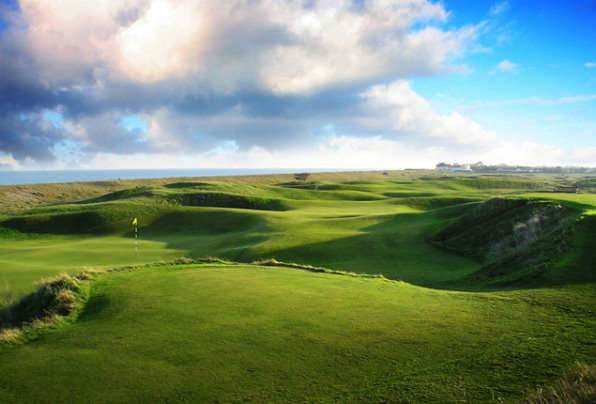
Visit Kent and the region’s 97 golfing venues have increased their commitment to the county’s sustainability drive to foster the local natural habitat.
With its varied landscape of deep woodland parks rich in wildlife, wide open coastal stretches and rolling hills, it is no surprise that Kent hosts some of the most diverse golf courses in England, attracting millions of golfers and visitors alike from across the UK, Europe and the globe each year.
Famous for its idyllic parkland and downland courses – like that of the London Golf Club – and for its challenging links courses that include last year’s Open venue Royal St Georges Golf Club, 1932 host Princes Golf Club and Royal Cinque Ports Golf Club where the event took place in 1909 and 1920, Kent is one of the largest areas of ancient broadleaved woodland in southern Britain – and a haven for birds, butterflies and plant life.
Given such a rich natural environment, the region’s golf courses have subscribed to many of the South East’s ecological initiatives, including Natural East Kent (NEK) which supports the sustainable regeneration of rural and coastal East Kent through the area’s natural environment and heritage. They have also affiliated themselves with Kent Wildlife Trust’s campaigns to help rebuild the area’s biodiversity.
The Sir Nick Faldo-designed course at Chart Hills Golf Club is, as a Kent Wildlife Trust member, one such course that has maintained a prolific natural habitat full of common lizards, grass snakes, adders, slow worms, great crested newts and over 15 different species of dragon and damsel flies.
“We keep the borders of our course long to encourage wildlife and look after our wooded areas that contain ancient oaks and hornbeam,” commented Sarah Saunders, Sales, Marketing & Membership Manager at Chart Hills Golf Club. “Last year we had a bumper acorn year and have replanted approximately 40 saplings to help preserve our natural environment.”
Royal Cinque Ports Golf Club is another local club that has been working closely with Natural England to sustain the region’s rich arable land, diverse horticulture and abundant wildlife. Its Secretary, Martin Bond, explains: “The green keeping ethos of the 70s, 80s and 90s didn’t particularly encourage the safeguarding of our indigenous species of grass.
“Since the turn of the century, we have worked hard to reintroduce local species such as marram fescues and bents to create an environment that can thrive on its own without extensive use of irrigation systems and high levels of nutrient input,” he continued.
Stephen Blake, Littlestone Golf Club’s General Manager and Co-Secretary, added: “Sustainability is playing an increasingly vital part of our business strategies, with more ecological facilities, ‘greener’ processes and more eco-friendly products to help foster our natural habitat.”
Sentiments echoed by another Kent Wildlife Trust member, North Foreland Golf Club, whose Secretary, Tony Adams, commented: “As part of our Environmental & Ecology Plan, we have installed a borehole and reservoir, started harvesting rain water and composting all green waste, as well as taken on the Operation Pollination programme that is designed to reverse the plight of bumblebees and pollinating insects in the UK. Added to the erection of 60 bird and two owl boxes, this should all help to reassure people that golf courses are good for the environment and are actively investing in ecological initiatives.”
Sandra Matthews-Marsh, Chief Executive at Visit Kent, continued: “We have been working closely with numerous local conservation organisations and renewed our dedication to protecting wildlife and wild habitats to create a living landscape where past diversity and abundance of wildlife have been restored to land and sea, where wild places are protected, recreated and reconnected to produce a robust and vibrant countryside, and where a rich, exciting and wild environment can be enjoyed by everyone.”
For more information on Kent, visit www.visitkent.co.uk

